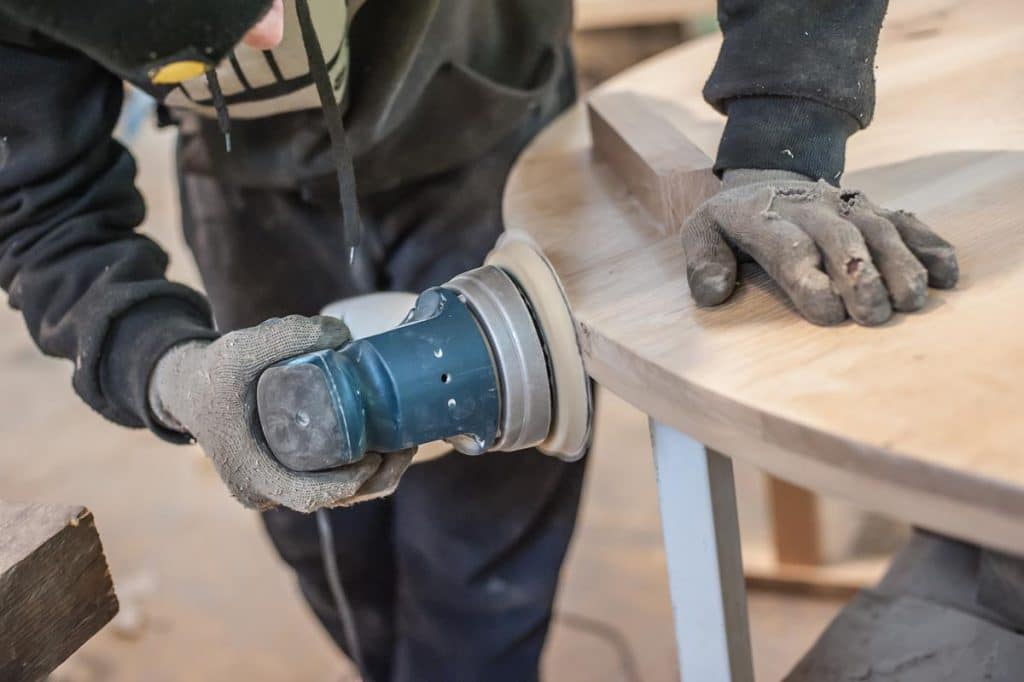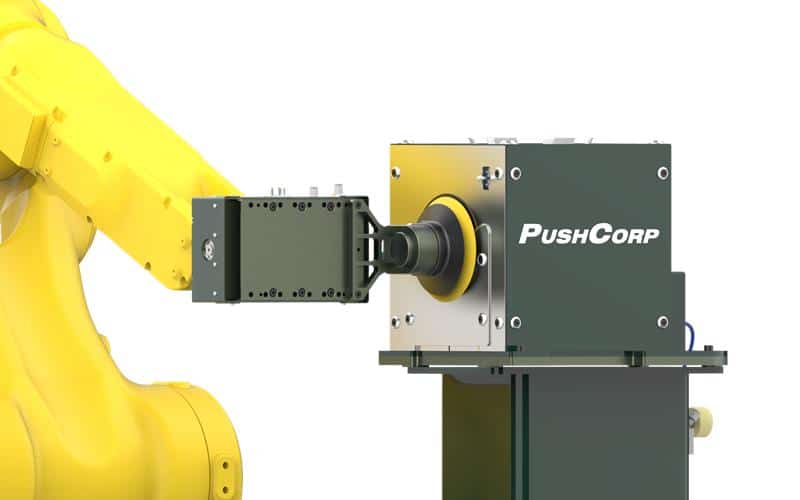
Sanding is often a crucial step of the manufacturing processes for many products. While it has typically been done by hand, manual sanding has proven to be time-consuming, complex, and repetitive. Human error, operator fatigue, and differences in finishing techniques between operators are some of the problems of manual sanding. Even the same professional may struggle to maintain similar levels of sanding quality throughout the course of a shift. This makes sanding an ideal process for automation.
Automated sanding improves consistency and quality and allows for better allocation of human resources to more productive tasks. However, even automated sanding and refinishing are not without problems, ranging from manually changing sanding pads during production runs to overall inconsistencies and quality control issues.
So, how can you overcome the biggest challenges facing your robotic sanding processes?
Meet PushCorp’s Paper Changer and Finishing Equipment
PushCorp’s brand new Paper Changer, The RPC100, addresses many of the common problems of automatic sanding. Here are its benefits:
Minimize Downtime Due To Manual Media Changes
Typical robotic sanding processes rely on human intervention to change worn-out media. This may not seem like a big deal, but this requires that an operator be available to tend to the discs as they wear — this defeats the purpose of the automation and if the operator is not there then the robot continues to use a disc past its useful life – both of these add cost to the system are unneeded consequences of a poorly executed automation solution.
The PushCorp Paper Changer and Sander can replace sanding discs automatically, thereby increasing the efficiency of robotic refinishing processes. It uses a knife edge to detach a worn disc, a mechanical sensor checks to verify the presence
or absence of the pad, and the robot uses the Paper Changer to apply the new disc — all without human intervention.
 Avoid Processing Defects From Using Worn-Out Sanding Media
Avoid Processing Defects From Using Worn-Out Sanding Media
When worn sanding discs are not detected early enough, it’s not just downtime your company suffers but also costs per part increase as process quality also takes a significant hit. As the machine works with an ineffective disc the finish is suffering. Such below-standard processes would then have to be repeated with a new sanding pad to get the best results.
If a servo spindle and force compliance device are used the process will benefit from the constant rotational speed and force that these products provide. For sanding applications, this will allow the abrasive to wear down linearly and will last twice as long as a manual process. This is a result of the abrasive not glazing over from excessive force and instead, it re-fractures to expose fresh abrasive. Because the discs breaks down linearly, it becomes much easier to determine when the paper is worn. For example, the end-user or integrator can monitor the process from the time a new disc is applied to the point in time when the finish becomes unacceptable. Determining when to change the disc can be based on the amount of time in contact with the part or the number of parts processed before the finish is unsatisfactory. This information can be leveraged to maximize the life of each abrasive disc and ensure the Paper Changer is utilized at the correct point in the process.
Achieve Consistent Results With Active Force Control
Achieving a high-quality finish requires consistent force against the part being processed. Too much pressure will remove a lot of the material and cause over-removal, while too little will lead to light scratches on the surface. One solution to control the applied for is to utilize passive compliance, but since it relies on an external air pressure regulator to set the force, it works best on flat parts but can also be used on simple geometries.
On the other hand, the Paper Changer and Sander can also work with active compliance, where a feedback loop monitors variables and delivers consistent force regardless of orientation or curvature. Compared to Force Torque Sensors, PushCorp’s solution works independently of the robot. Because it does not have the mass of the robot to contend with it can apply more accurate force and react in a fraction of the time, This accurate force allows for highly repeatable surface finishes for automated sanding applications.
Use Only the Right Tool for the Job With Process and Media Selection
Every material is unique, and each customer has specific expectations. Hence, there’s no one-size-fits-all approach to achieving the best results. If anything, determining the medium that will produce the desired finish in record time requires an in-depth understanding of the sanding process.
What if you’re dealing with a single material with multiple surfaces and finishing requirements? You’d need to be able to perform numerous media changes during the automated cycle, a task that calls for equipment with the ability to change media automatically.
To that end, PushCorp has up to three in-house robots for testing applications and helping to select the right tools and abrasives for a particular task.
Maximize the Efficiency of Your Refinishing Processes With the Paper Changer and Finishing Equipment
PushCorp’s Paper Changer and line of Finishing Equipment are an excellent choice for automated refinishing applications with high sandpaper usage, like sanding composite aerospace parts, porcelain sinks or bathtubs. Additionally, it will eliminate downtime and ensure you enjoy long periods of fully automatic sanding. Call PushCorp today at 972-840-0208 or fill out the quick contact form on our website to speak to our experts about your sanding processes.
